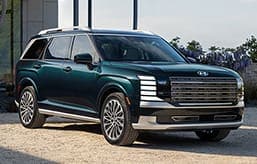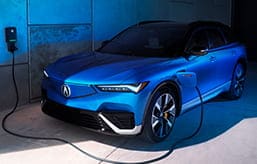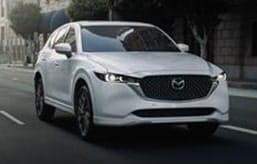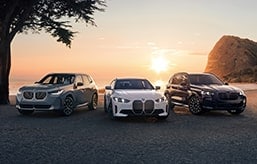- Four new STLA platforms cover electric-vehicle needs from small cars to big trucks
- Electrified Charger and Challenger models expected by 2024
- A full-EV Ram 1500 will go into production by 2024
Jeep, Ram and Dodge Expand Electrified Offerings
More plug-in hybrids are on the way soon, with full EV options on the horizon
There are four new size-based platforms on the way from the global auto group Stellantis. Covering the American brands it now owns — Jeep, Ram and Dodge — Stellantis released a flurry of details today regarding its electrification future. In short, there are several hybrid, plug-in hybrid and full electric models across the Stellantis range that are on the horizon. Some will come out soon, while others are about five to 10 years away.
Jeep Grand Cherokee 4xe
The Jeep Grand Cherokee will likely be the next Stellantis product to get electrification in North America. Using a version of the Wrangler's 4xe powertrain, we expect the Grand Cherokee (and its three-row counterpart, the Grand Cherokee L) to get a plug-in hybrid option soon. In the Wrangler, the 4xe powertrain uses a turbocharged 2.0-liter four-cylinder engine paired with a rechargeable plug-in hybrid system. It produces a significant amount of power for its size — 375 horsepower and 470 lb-ft of torque — which should certainly be enough for the larger Grand Cherokee. While Jeep hasn't released any official details, we expect to see the Grand Cherokee 4xe on the road sometime early in 2022.
More electric changes are also in store for the Jeep lineup. The Stellantis EV Day presentation included video coverage of full-EV Jeep Wranglers in preproduction form. One interesting feature Stellantis showed off is a vehicle-to-vehicle charging system. It would allow an electric Wrangler to connect and recharge the battery of another electric Wrangler, presumably one that had run out of battery power. Stellantis also showed video of an unmanned Wrangler driving on the trail, with the caption "Autonomous off-road capable by 2030" followed by a rather incongruous "Do Not Attempt" disclaimer at the bottom of the screen.
We also saw footage of fold-flat seats in the EV Wrangler, and something called flat-seat stargazing — where a fully automated Jeep drove through the woods as its owners laid back and enjoyed the stars. These technologies will likely take quite some time to make it into production cars (if ever). But a few vehicles that are a bit closer to seeing road time were also teased, including plug-in hybrid versions of the Jeep Compass and Renegade and a zero-emission Jeep Grand Wagoneer.
Am I Ready for an EV?
- EV ownership works best if you can charge at home (240V outlet)
- Adding a home charging system is estimated to cost $1,616 in
- Edmunds is partnering with Treehouse, an independent provider of home EV installation services. Learn more about the installation services partnership
Ram goes electric
We expect electrified versions of Ram vehicles, too. Looming largest among them is an electric Ram 1500. Stellantis' presentation gave us only a few details on the Ram, but we do know that it will use the largest of the new Stellantis platforms, aptly named STLA Frame. The four new platforms — STLA Small, Medium, Large and Frame — refer to vehicle size and EV range. Those four platforms have range goals of 300, 440, 500 and 500 miles, respectively. The Ram 1500 will be built on the largest platform, and if these early range estimates are accurate, it will far outpace the new Ford F-150 Lightning, which has a targeted range of 300 miles.
Details were slim on other EV products from the Ram brand, but we expect to see electrified versions of the Ram ProMaster and ProMaster City in the near future too. And while they didn't tip their hat too much, the Ram folks did hint at a new midsize pickup truck that would likely receive some form of electrification as well. Production on the all-electric Ram 1500 is expected to begin in 2024, with a "full portfolio of electric solutions" by 2030.
EV muscle cars
The Charger and Challenger will absolutely be electrified in the next few years, with fully electric models expected around 2024. But Dodge's presentation highlighted performance rather than range. Burnouts are still on the menu, with the idea that Dodge plans on using EV tech to make its vehicles faster and even more performance-oriented. The Charger and Challenger will likely use the STLA Large platform when an EV model comes to market, but we expect a hybrid or plug-in hybrid version of the Charger to be announced sometime before 2024.
Edmunds says
We expect to see plug-in hybrid or full-EV vehicles making their way into every vehicle segment over the next few years, from muscle cars to off-roaders and even commercial work vehicles. Improvements in fuel economy will likely be a big focus, but we expect to see big performance improvements too. That means increases in vehicle acceleration, towing capacity and off-road capability.








 by
by